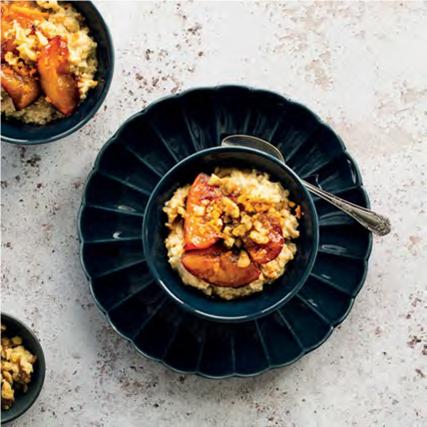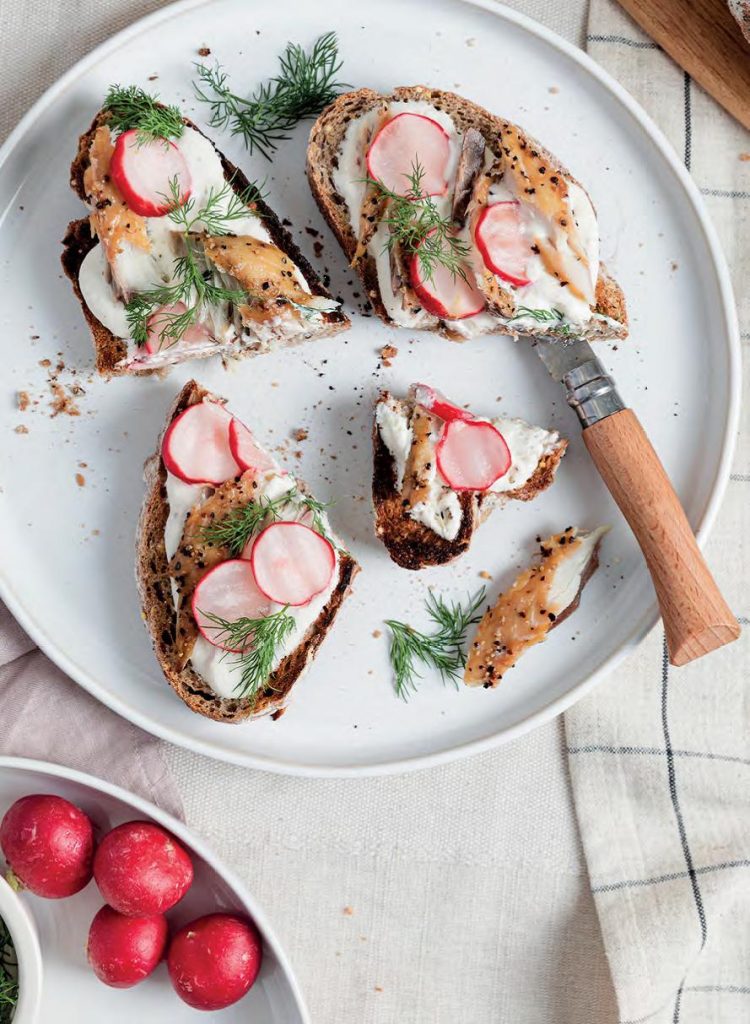Anyone who grew up in the 80s or 90s will remember rooting around in a brand-new cereal box in the hope of plucking a plastic toy from its crispy depths, only to discard it moments later after finishing your last sugary spoonful. While it’s not hard to see why some childhood breakfasts didn’t survive updated government nutrition guidelines and dwindling sales (not to mention the birth of avocado on toast), others remain a staple choice in many households. Arguably the king of cereals, Kellogg’s alone can be found on 17.5 million British kitchen tables, with big brands like Nestlé and Weetabix following closely behind. They’re a convenient and speedy morning meal after all, especially when trying to rally the kids in time for school is akin to a military operation and your first meeting is in t-minus three minutes. The side effect? Some standard breakfast cereals are heavily processed, meaning they’re broken down by the body faster, leaving you hungrier faster than you can say shredded wheat. Luckily for you, our squad of experts have recommended the best foods to ensure you and your family have the best start to the day, every day.
Cereal offenders
Allow us to hit you with some knowledge: many people, particularly children, eat too much sugar on a daily basis with breakfast seemingly the main culprit for kicking off the imbalance. To play devil’s advocate, cereals aren’t totally off limits, and there are worse things to have for breakfast than a bowl of Fruit and Fibre, for instance. Some wholegrain cereals are high in fibre and fortified with a range of nutrients, including B vitamins, iron, calcium and vitamin D. The big dilemma for us and our kids? New research by Action for Sugar has revealed that 92 percent of breakfast cereals that are aimed at children (think: the ones that are frosted, have chocolate chunks thrown in the mix or honey-coated) contain high levels of sugar, contributing to blood glucose spikes, high cholesterol and an increased chance of diabetes.
Aside from messing with hunger cues and keeping our blood-sugar levels balanced, the sweet stuff has been linked to a number of negative health effects, says alkaline nutritionist Simone Thomas (simonethomaswellness. com). “[Sugar] stresses your liver, weakens your immune system, can cause skin issues, tooth decay, obesity, heart disease and hyperactivity, affects concentration at school or at home and disrupts sleep. It can have an impact on mental health, causing mood swings and increasing risk of depression and anxiety later in life.” Plus, you don’t need us to tell you that the more you eat, the more you crave.
Snap, crackle and drop
The NHS recommends that no more than five percent of our daily calories come from sugar and, as a quick pointer, the higher sugar is listed on an ingredient list, the more sugar a product contains. Sugar tends to feature near the top of some of these cereals, which means as soon as we eat them, sugar is absorbed into our blood and begins to race around our bodies. In order to bring our blood-sugar levels down, our body releases a chemical called insulin, which starts shipping out that sugar from the blood and into other parts of the body but when lots of insulin is released to deal with a big sugar hit in one go, it can often result in blood-sugar levels dropping far too quickly, kind of like a rollercoaster ride.
To keep children’s blood-sugar levels on a flatline, there are some helpful guidelines to follow. “For a child between the ages of four and six, their recommended sugar intake would be no more than 19g [around five cubes of sugar]; for children aged seven to 10 this would be no more than 24g [equivalent to six cubes],” advises Emily Rollason, senior nutritionist at Holland & Barrett. “For younger children, there’s no specific advice, but it’s best at this age to try and avoid /added sugar as much as possible.” The difference between free, added, hidden and natural sugars is where we tend to trip up, but we’ll level with you – sugar is sugar, just under a different guise. That being said, there are some that are harder for our bodies to digest and can have a larger impact on our health, such as cane juice and date syrup. “Natural sugar occurs in ‘wholefoods’, such as bananas and tomatoes, and an added sugar is something added to food to make it sweeter,” explains Dr Federica Amati (PhD), chief nutrition scientist for Indi Supplements (indisupplements.com). She points out that confusingly, some foods contain naturally occurring sugars posing as added sugars, which isn’t helpful when you’re scanning the back of a cereal packet. “For example, apple juice concentrate added to a shop-bought fruit smoothie is still an added sugar, as it’s in addition to what would naturally be found in the whole fruits. Added sugars can also come in the form of sugar alcohols or refined corn syrup, which are much more harmful to long term health than the natural sugars found in foods such as sweet potato,” she adds. Yep, you guessed it, these added or free sugars are often hidden in some cereals.
A breakfast of champions
Often hailed as the most important meal of the day, we seem to be doing ourselves – and our kids – a disservice whenever we sit down to eat a sugary breakfast. Not ideal, so let’s talk solutions. “Good alternatives for healthy breakfasts tend to be rich in protein (for appetite control, blood sugar regulation and muscle mass), fibre (for cardiometabolic and digestive health), micronutrients (vitamins and minerals), and plant chemicals named polyphenols,” says Dr Greg Potter, chief science officer at Resilient Nutrition (resilientnutrition.com). Armed with those pearls, he suggests turning to foods rich in healthy fats (such as eggs and smoked fish), minimally-processed dairy products (such as natural yoghurt, cheese, milk and whey protein), jumbo oats (to improve blood-sugar control) and the usual suspects of a healthy diet, fruits and vegetables. “The adage of ‘eating the rainbow’ applies here and to keep your blood sugar levels in check, it’s best to base your meals around these protein- and fibre-rich items,” he adds.
Staple ingredients in Simone’s household are oats (“a good source of energy for children”), peanut butter (“high in protein and essential vitamins”) and wholemeal bread (“perfect for busy households in the morning”). And, if cereal is your thing, that’s totally fine. Emily recommends looking for ones that have a short ingredients list. “Plain porridge oats are also a great way to start the day. They’ll provide a good source of slow-releasing energy and your child can add their own sweet toppings that don’t contain free sugars. Try blueberries, raspberries, raisins, apple slices with a sprinkling of cinnamon or sliced banana,” she suggests. “The fruit will provide added nutrients and fibre and would class as one of their five-a-day. You may also be able to find no added sugar versions of some childhood favourites, such as wholegrain puffed rice cereal.” For a sugar spike-free start to your day, Dr Federica echoes the above, and is a strong advocate for a savoury breakfast that includes avocados, eggs, sardines, rye sourdough bread, extra virgin olive oil, nuts and seeds.
Feel-good family fuel
Breakfast ideas that are delicious and healthy, any time of the morning
Porridge with honey poached plums and walnuts

“Porridge is one of my favourite breakfasts for few different reasons: oats are not only easy to make and delicious, but also high in protein and carbohydrates,” says Simone. “Oats take longer to digest, making you feel fuller for longer and, because of the fermentable fibre, they’re great for your gut health and offer plenty of digestion-boosting benefits.”
Serves: 2
Ready in: 10 minutes
• 4 plums, quartered and stoned
• 2 tbsp honey
• 100g oats
• 300ml of your favourite milk (I use almond milk)
• ½ tsp ground cinnamon
• Pinch of salt
• Freshly grated zest of one small orange
• A handful of crushed walnuts
• 1 tbsp good quality honey or maple syrup
- Heat the plums and honey in a small-sized pan over medium heat for around four minutes on each side, or until soft and slightly caramelized. Add a little bit of water if the pan looks too dry. Leave the plums on the side for a couple of minutes.
- Put the oats, milk, cinnamon, salt, and half of the orange zest into a pan and cook for 10 minutes over a very small heat, stirring from time to time.
- Spoon the porridge into two bowls, and top with previously prepared plums, crushed walnuts, rest of the orange zest and some extra honey, if you like.
Radish and mackerel toast

Serves: 2
Ready in: 10 minutes
• 5 radishes, sliced
• 2 tbsp white wine vinegar
• 1 tsp caster sugar
• 2 tbsp sour cream
• 1 tbsp horseradish cream or sauce
• Salt and pepper
• 2 slices rye bread, toasted
• 1 large fillet peppered smoked mackerel, flaked
• Dill
- Put the radishes in a bowl. Mix in the vinegar and sugar. Leave for 10 minutes.
- Meanwhile, mix together the sour cream, horseradish and seasoning. Spread over the rye bread.
- Top with the flaked mackerel, the drained radishes and garnish with dill.



















